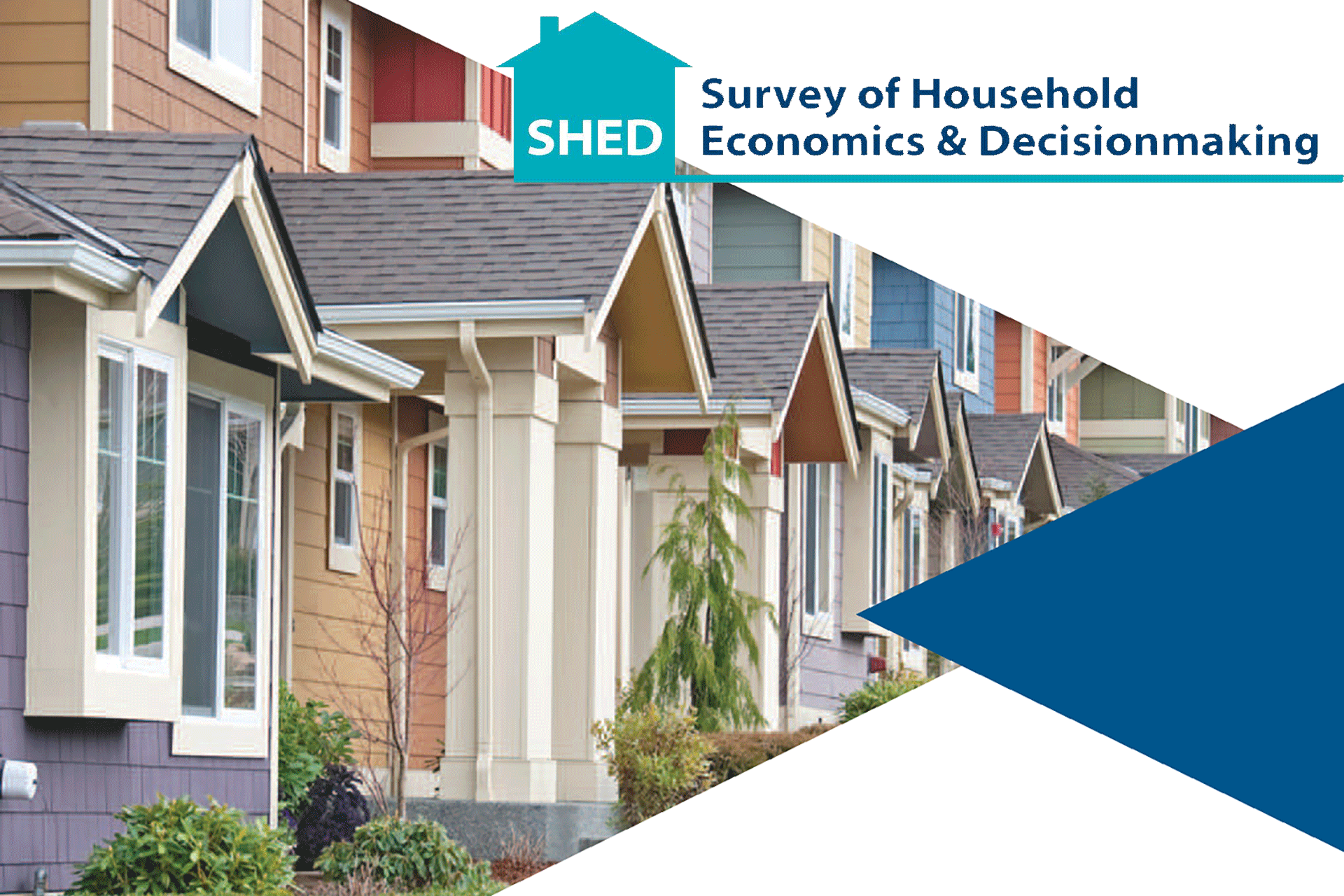Economic Well-Being of US Households in 2024


Results from the 2024 Survey of Household Economics and Decisionmaking (SHED), which was fielded in October, indicate that people’s financial well-being was similar to the previous two years but below the high reached in 2021.1 Concerns about prices persisted, and labor market conditions remained solid.
Inflation and prices continued to be the top financial concern. A majority of adults also said that changes in the prices they paid over the prior year had made their finances worse, but the share saying so declined from 2023. In response to higher prices, most people reported taking actions such as adjusting their spending over the prior year. The share who took actions in response to inflation was similar to 2023, but down slightly from 2022.
The labor market remained solid. Similar shares of people both started and voluntarily left jobs in 2024 compared with 2023. However, these measures were below their peaks in 2022. Additionally, a smaller share of people who changed jobs said that their new job was better in 2024 compared with 2023.
People also continued to earn money doing gigs, including 13 percent who sold things and 9 percent who did short-term tasks such as giving rides or doing odd jobs. A meaningful share of those performing these types of gig activities said that without them they would have trouble making ends meet, though many said they wished the pay was more consistent.
Emergency savings measures were similar to the previous two years, while retirement preparedness improved slightly. The share of adults who would pay for an unexpected $400 expense with cash or the equivalent was unchanged from 2022 and 2023, and the share who said they had rainy day funds to cover three months of expenses edged up. Additionally, non-retired adults were slightly more likely to say that their retirement savings plan was on track than in 2023, extending the upward trend from 2022. That said, each of these measures was down from 2021.
Survey results also highlighted financial risks facing consumers. Twenty-one percent of adults experienced financial fraud or scams in 2024. While credit card fraud was the most common type of financial fraud, consumers are not typically required to cover these losses directly. In contrast, the 8 percent of adults who experienced fraud not related to their credit card lost an estimated $63 billion in total. Other financial risks involved being unprepared for unexpected events, including by lacking homeowners insurance. Overall, 7 percent of homeowners went without homeowners insurance, frequently because they could not afford it.
The survey continues to track other financial topics, such as care work; retirement; cryptocurrency; buy now, pay later (BNPL); rental affordability; and student loans. Key findings across each of the sections in the report include the following:
To learn more about the SHED’s findings and for the full report, downloadable data, and other materials, visit the Federal Reserve Board of Governors.
Transcript
Since 2013, the Survey of Household Economics and Decision Making has measured the economic well-being of U.S. households. The survey tracks key topics related to financial outcomes and consumer experiences.
In the most recent survey, fielded in October 2024, 73 percent of adults reported that they were either doing okay or living comfortably financially, similar to 2022 and 2023 but below the level reported in 2021. The survey also revealed that prices continued to be a top financial concern in 2024. 60 percent of adults said that inflation made their finances somewhat or much worse in the prior year. However, this share was down from 65 percent in 2023.
To better understand the labor market, the survey included questions about movements into and out of jobs. Similar shares of adults applied for jobs in each of the past three years. However, the share who voluntarily left a job has declined since 2022, while the share who lost a job was slightly higher, suggesting less demand for workers.
Another way of examining how well the job market is working for people is to measure whether people who had a different job from a year prior, like their new job more. Among those who changed jobs,62 percentsaid that their new job was better, down from a peak of 72 percent in 2022.
There was a similar decline in 2024, in the share of job changers who said that their new job improved in terms of pay and benefits, interest in the work, opportunities for advancement and work life balance.
1 The Federal Reserve has fielded the SHED annually in the fourth quarter of each year since 2013. The latest survey was fielded from October 18 until October 31, 2024. The anonymized data, as well as appendixes containing the SHED questionnaire and responses to questions in the order asked, are also available at https://www.federalreserve.gov/consumerscommunities/shed.htm.

Industrial flex space has become a quiet favorite among sophisticated investors seeking durable income backed by real business demand. If...

Getting an inheritance is the epitome of a mixed blessing. You receive a financial windfall, but the cause is the...

During his tenure as the California Secretary of Health and Human Services, Mike Wilkening cemented his reputation as a steady...